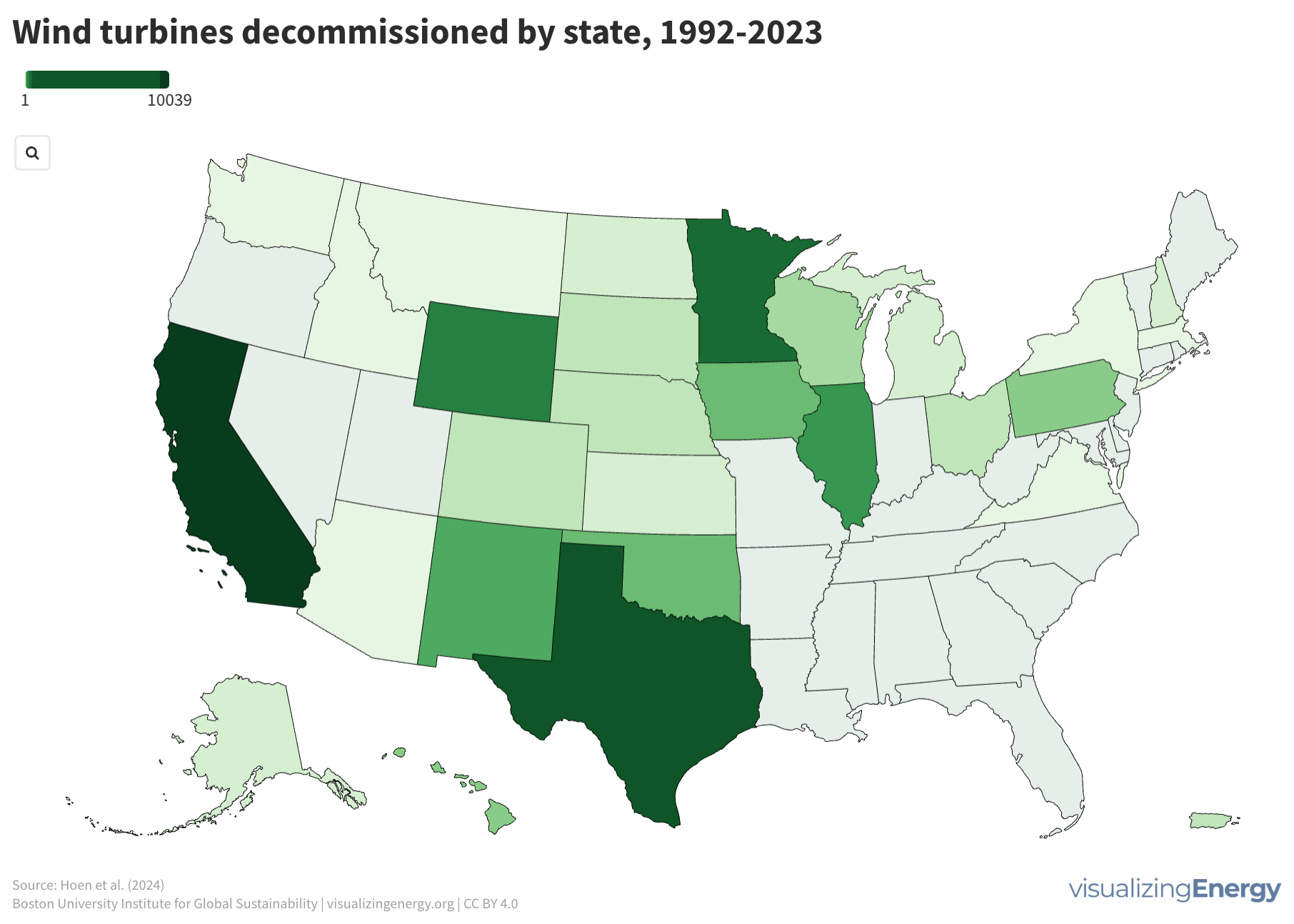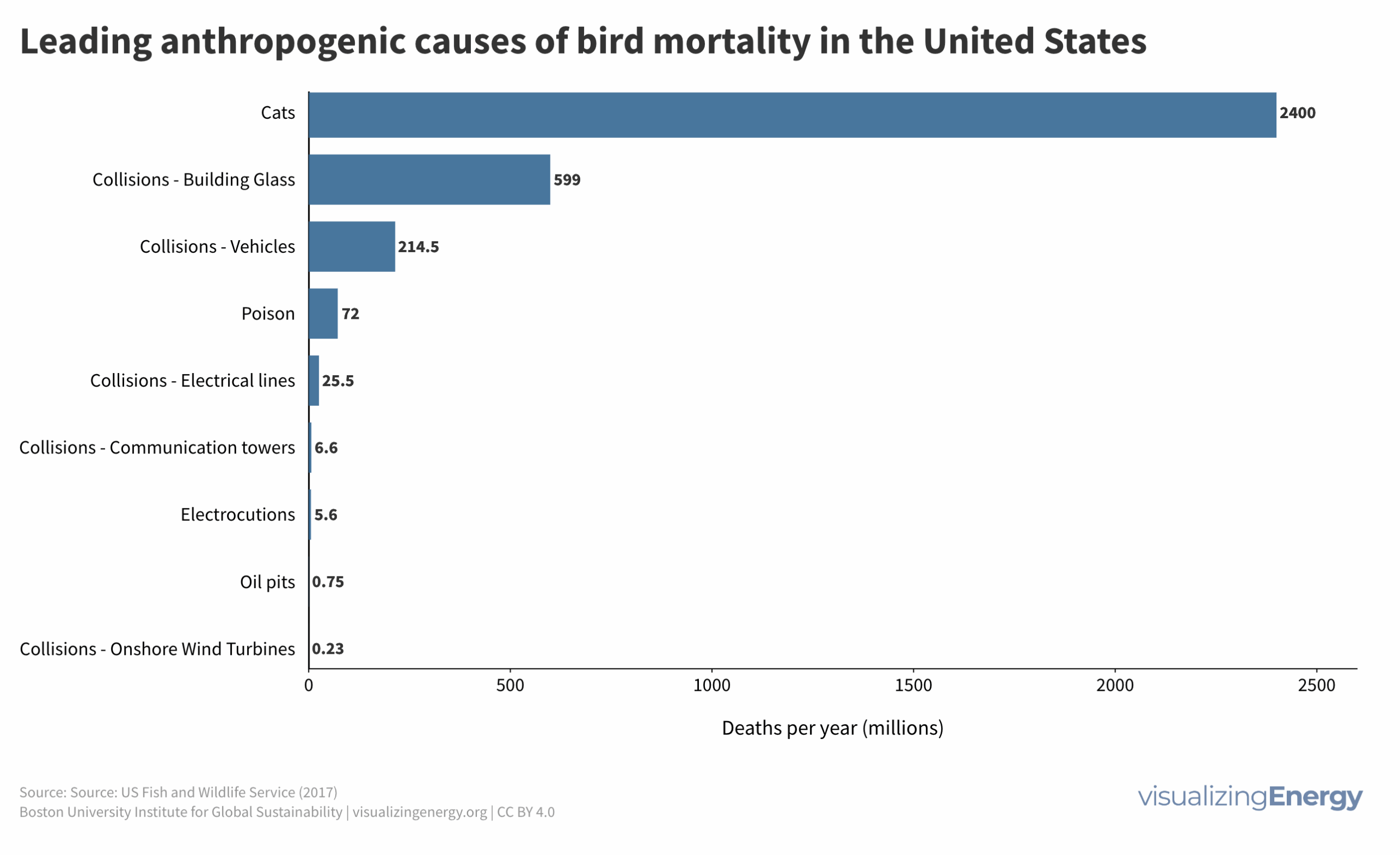
Where is new wind power in the United States being built?
Modern wind energy in the United States began in California in the early 1980s with several wind farms in mountain passes in central and Southern

Modern wind energy in the United States began in California in the early 1980s with several wind farms in mountain passes in central and Southern

More than 86,000 wind turbines were built in the US from 1981 to early 2024, with over 11,000 decommissioned since 1992. Decommissioning presents waste management challenges, especially with the difficult-to-recycle turbine blades. Research is ongoing for recyclable blades, such as those made from plant material, to address the issue.

Concerns about wind turbines causing bird deaths are often exaggerated. Data shows that bird fatalities from wind turbines are relatively low compared to other causes like domestic cats and building collisions. When assessing the relative impact on bird mortality, wind energy appears less harmful than many other forms of electricity generation.

In 2020, 938 new global wind projects added 75,812 MW, with the largest being the 1200 MW Hornsea offshore wind farm. Over 90% of new capacity came from onshore wind farms (76 MW average), while offshore farms averaged 283 MW.

The global wind energy industry has seen substantial growth, but women make up only 21% of its workforce, lagging behind other renewable energy sectors. Barriers to gender equity include cultural norms, limited awareness of opportunities, and lack of support policies. Companies can promote change by prioritizing fairness, transparency, and work-life balance.

The wind energy industry started in the 1980s in Southern California and several European countries. Today, the United States, Europe, and countries like India, Australia, Japan, Canada, China, and Brazil lead in new wind power capacity. Currently, wind power generates around 7% of global electricity, with onshore systems dominating but offshore capacity expected to grow in the future.